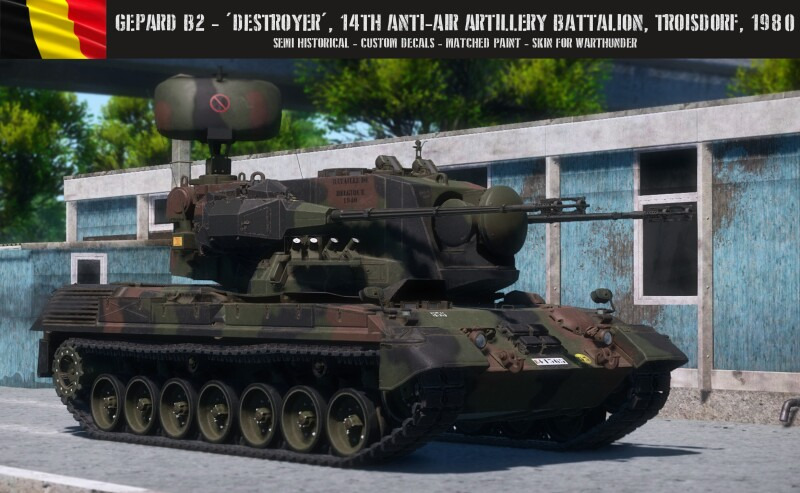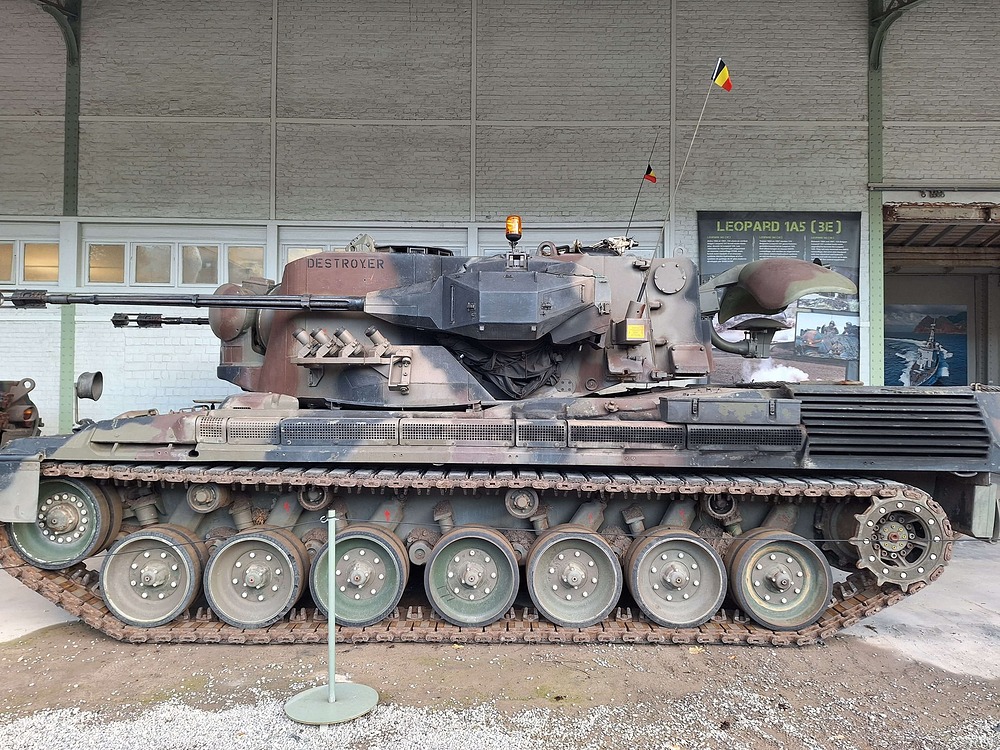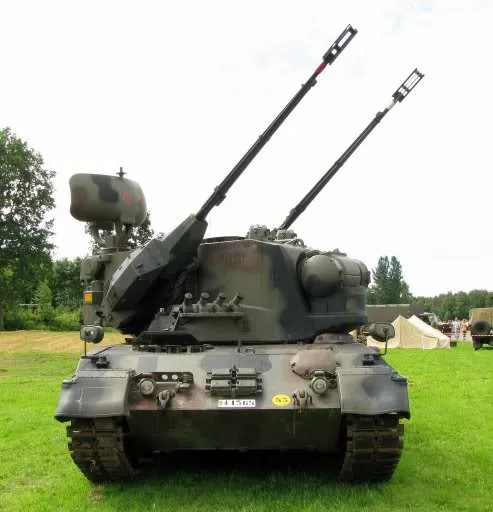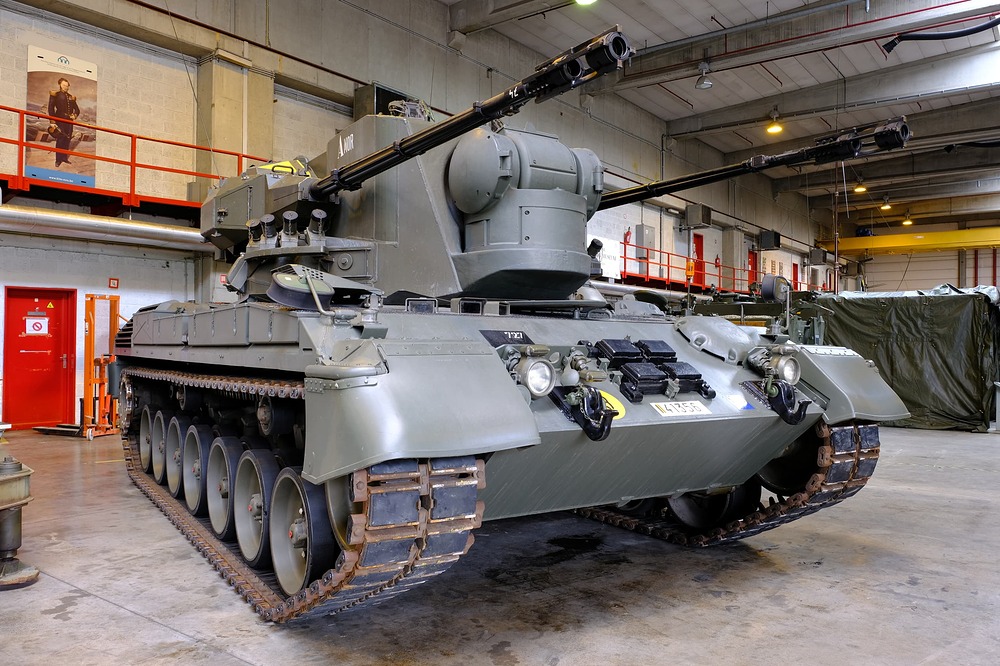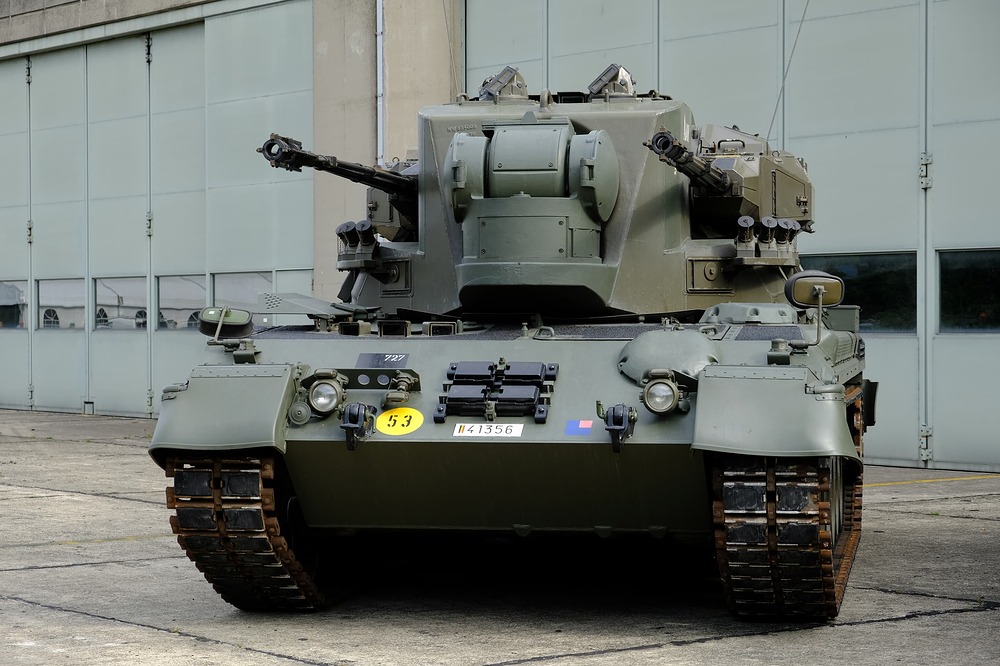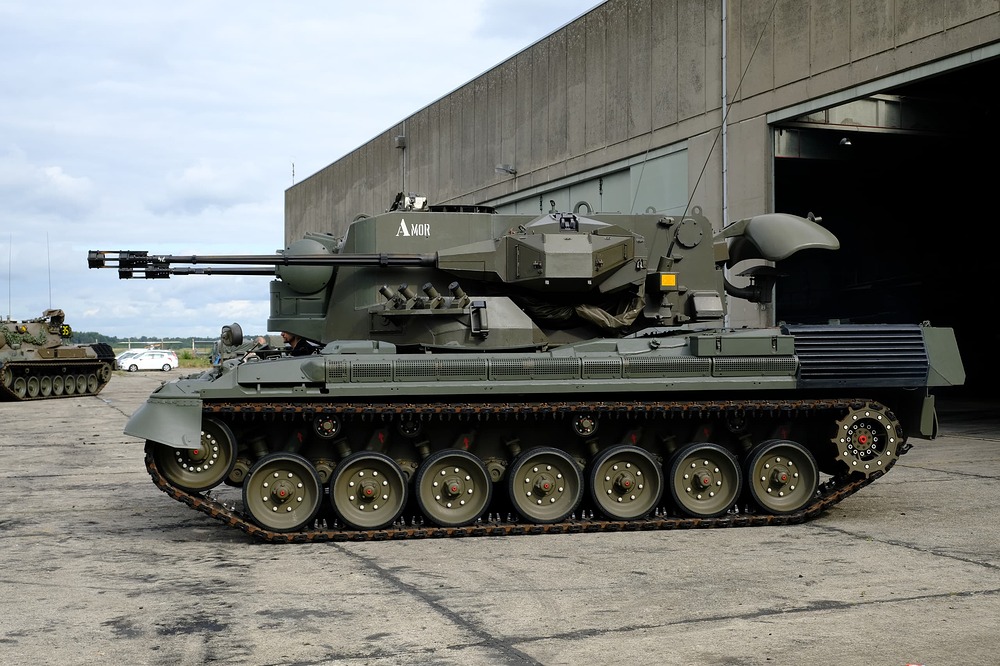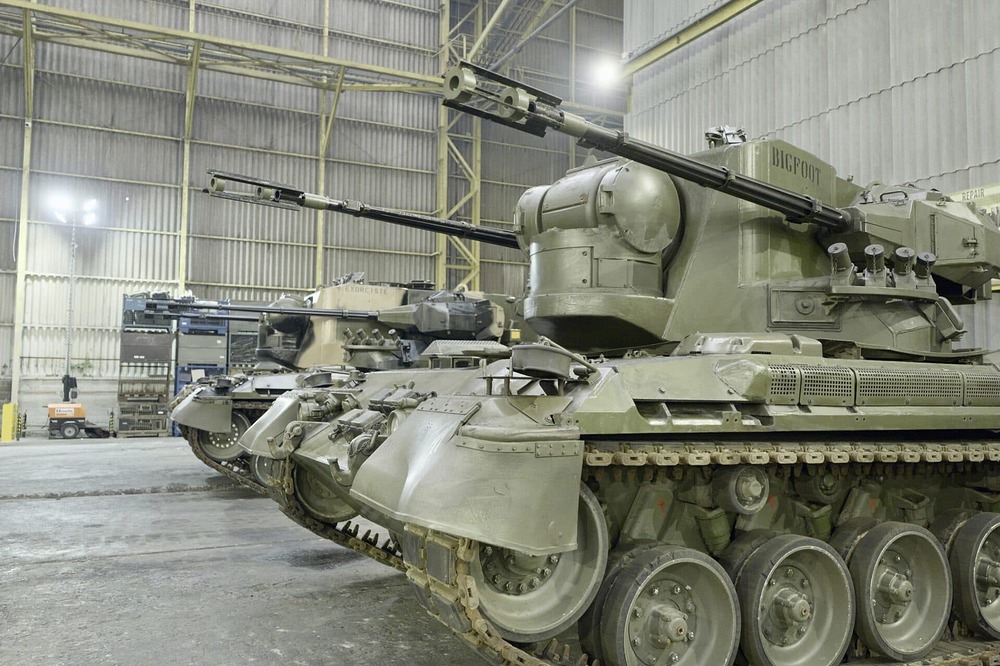- Yes
- No
- (independent) BeNeLux tree
- France: BeNeLux subtree
- Germany
- Belgian (sub) tree
- other
- I voted ‘no’ in the previous poll
Hello all, today I’d like to suggest one of Belgium’s most recognizable Cold War air-defense vehicles: the Gepard B2LV (Laser Voorbereid – “Laser Prepared”). This was a Belgian modernization of the iconic Gepard, intended to integrate a laser rangefinder into the fire control system, which was tested and only implemented on 27 Belgian Gepards.
TL;DR: A Belgian modernization of the Gepard, featuring improved fire control and laser rangefinder integration.
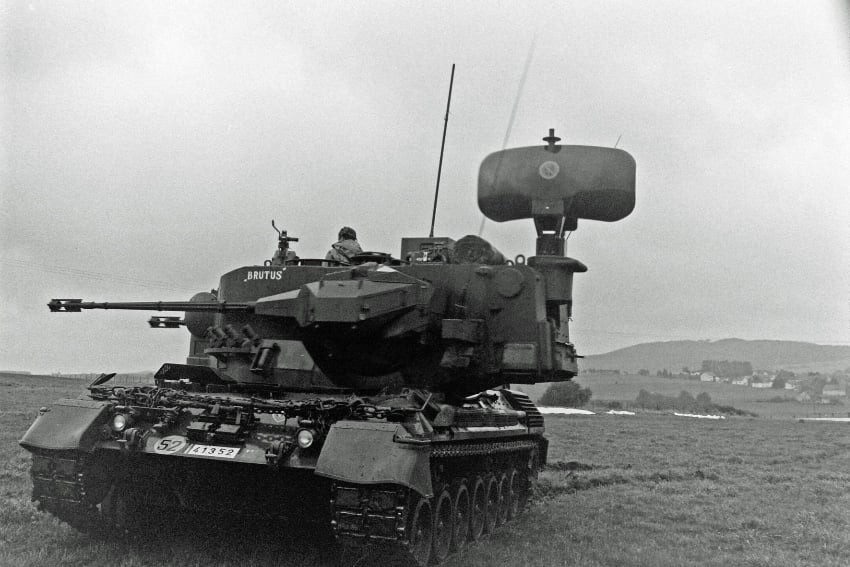
History
History
Cold War NATO Context
During the Cold War, Belgium was a frontline NATO member with forces deployed in West Germany to help defend against a potential Warsaw Pact attack. Mobile short-range air defense (SHORAD) was critical, as low-flying aircraft and helicopters posed a major threat to armoured and mechanized divisions.
The Gepard was designed to replace older AA systems such as the M42 Duster, which had been supplied to Germany in the 1950s. While effective in Korea and early Cold War scenarios, the M42 lacked radar or a proper fire-control system. By the late 1960s, West Germany, The Netherlands and Belgium needed a Leopard 1–based SPAAG with radar guidance and heavy autocannons. Prototypes with twin 30 mm and 35 mm guns were trialed, with the Oerlikon 35 mm KDA selected for production.
Belgian Acquisition
Belgium was the first nation outside of Germany (The Netherlands ordered the CA1 version even before the Germans ordered theirs) to order the standard Gepard and ordered 55 Gepards in total, delivered between 1977 and 1980. These were split into:
- 28 Gepard B2 (standard export configuration)
- 27 Gepard 2BLV (Laser Voorbereid) — fitted with wiring and systems to prepare for the integration of a laser rangefinder into the fire control system. The Laser rangefinder was installed and used in several units, such as the one seen below:
The Gepards entered service in 1978 and were deployed with Belgian Army units stationed in West Germany as part of NATO’s Northern Army Group (NORTHAG). Their primary role was to provide divisional air defense against Soviet aircraft and helicopters. The were also seen in many NATO fieldings in Western-Germany.
A video about NATO training with Belgian Battalions, the Gepard B2LV is shown several times.Operational Period
Belgian Gepards remained in front-line service in Germany until the fall of the Berlin Wall in 1991, after which Belgium began to restructure its defense commitments. The Gepards were withdrawn to Belgium, where they continued to serve in a training capacity at Nieuwpoort and Lombardsijde, integrated into the luchtdoelartillerieschool (anti-air artillery school).
Retirement
By 1994, the Belgian Army began phasing out its Gepards, reflecting NATO’s shift away from heavy tracked gun-based air defense. Belgium increasingly relied on missile-based systems such as the UNIMOG 1,9 Ton 4x4 Fuselier MISTRAL. The Gepards were sold to OIP land systems from 1994 untill 1996.
Despite their relatively short frontline service life, the Gepard 2BLV represented Belgium’s peak in tracked radar-guided anti-air capability.
Year Event 1976 First German production Gepard rolls out. 1977–1980 Belgium receives 55 Gepards (28 B2, 27 2BLV). 1978 Belgian Gepards enter service in West Germany. 1978–1991 Operational deployment in Germany as part of NATO NORTHAG. 1991 After the fall of the Berlin Wall, Belgian Gepards are withdrawn to Belgium. 1991–1994 Gepards stationed at Nieuwpoort & Lombardsijde as part of the anti-air artillery school. 1994 Gepard 2BLV retired from Belgian service.
Differences from the standard Gepard B2
Differences
Belgium operated two versions:
- Gepard B2 (standard German export and Bundeswehr variant)
- Gepard 2BLV (Laser Voorbereid) — prepared for integration of a laser rangefinder into the fire control system, which was also trialed and used with Laser Rangefinder.
Belgian camouflage and markings.
Some differences in internal communications, such as Belgian radios and training equipment.
In all other respects, the Belgian vehicles matched the German Gepard B2, being almost 99% identical except for the rangefinder in terms of combat capabilities.
Belgian Gepard vs. Dutch PRTL
Comparison
While both Belgium and the Netherlands fielded the Gepard family, their vehicles differed significantly:
Belgian Gepard (B2 & B2LV)
- Based on German Gepard B2 turret and radar suite.
- 2BLV version for laser rangefinder.
- Retained German-style search radar (rear-mounted dish) and tracking radar.
- Export camouflage (neutral tone or NATO tri-colour) and Belgian Army markings.
Dutch PRTL: CA1 PRTL - The Dutch sister to the Gepard
- Same hull/gun system, but turret fitted with Hollandse Signaalapparaten radar systems (surveillance + tracking).
- Distinctive rod-shaped search radar on an articulated arm.
- Cone-shaped tracking radar instead of semi-circular.
- Different smoke dischargers (2×6 vs German/Belgian 2×4).
- Tracks with V-shaped profile (logistics choice).
In-game relevance:
- Belgian Gepard 2BLV = closest to German Gepard, but adds late Cold War flavor with laser prep. Should be inbetween the B2 and the 1A2 german gepards in terms of capabilities.
- Dutch PRTL = unique indigenous radar suite and exterior differences.
Both justify separate additions, especially within a BeNeLux subtree.
Specifications
Category Details Crew 3 (commander, gunner, driver) Weight 46–47.3 t Dimensions Length (with guns forward): 7.68 m; Hull length: 6.9 m; Width: 3.27–3.40 m; Height (radar up): 4.0 m; Height (radar down): 3.29 m Ground clearance 0.44 m Armor Leopard 1-based hull Engine MTU MB 838 Ca M500 V-10 diesel, 610 kW (830 hp DIN) Auxiliary Power Unit (APU) Daimler-Benz OM 314 diesel, 66 kW Transmission Renk HSWL 354 Performance Max speed: 65 km/h; Range: 550 km; Vertical obstacle: 1.2 m; Trench crossing: 3 m Armament 2 × 35 mm Oerlikon KDA autocannons Rate of Fire 550 rounds/min per gun (1,100 total) Muzzle Velocity 1,175 m/s Ammunition Load 320 AA rounds per gun; 20 AP rounds per gun Ammunition Types HEI, HEI-T, SAPHEI-T, APDS-T Gun Elevation −5° to +85° Gun Control Rates Elevation: Acquisition 750 m/s, Tracking 750 m/s; Azimuth: Acquisition 1600 m/s, Tracking 1000 m/s Radar – Search S-band radar; Range: 15 km; 360° coverage; Pulse-Doppler; Frequency agility (6 options) Radar – Tracking Ku-band radar; Range: 15 km; High ECM resistance; 600 mm parabolic dish Optics Monocular periscope, magnification 1.5× (wide, 50° FOV) or 6× (narrow, 12.5° FOV) Laser Rangefinder Yes (Siemens unit on later German versions and on the Belgian B2LV) Fire Control Computer Miniaturized analog computer; integrates radar & optical data NBC Protection Yes Power Supply 3 × 200/115 V 3-phase generators; 24 V DC battery system
Place in War Thunder
The Belgian Gepard B2LV would slot naturally into the late Cold War BR range of 8.0–9.0, serving as a radar-guided SPAA with enhanced fire control compared to the base Gepard.
Regarding nations
France (BeNeLux subtree)
With the announced BeNeLux subtree, this is the most fitting home for the Belgian Gepard B2LV.
BeNeLux Independent Tree
As one of Belgium’s most important Cold War vehicles, the Gepard B2LV would be a cornerstone of BeNeLux SPAAG capability, being the almost twin sister of the PRTL in its capabilities. Having a Laser rangefinder instead of the Dutch radar equipment.
Germany
As the Gepard is a German design, Belgium’s B2 “Laser Voorbereid” could also be added here as a foldered alternative or premium, although this is far less likely considering BeNeLux has now been added as a French Subtree. If you want to you can already experiance playing with a Belgian skin using this: WT Live // Camouflage by ItssLuBu
Pictures
Belgian Gepards B2LV in service or Museums
‘Destroyer’ In Brussels.
In Leopoldsburg during ‘opendeurdag’
In the Main hall of the Royal military Museum in Brussels
A normal B2 model ‘Amor’ being at the Gunfire Museum in Brasschaat.
Belgian B2LV Gepard ‘Bigfoot’ in an IOP warehouse with the Belgian markings.
Sources
Sources
- Spielberger, W.J., Der Weg zum Flakpanzer Gepard (Munich, 1980). In English translation available in the library of the Army Museum: W.J. Spielberger, Gepard. The history of German anti-aircraft tanks (Munich, 1982).
- KNDS 1A2 Gepard as reference to compare: GEPARD | KNDS Group
- https://weaponsystems.net/system/69-Gepard
- Belgian defense photo archives (1978–1994)
- https://www.orbat85.nl (Belgian OOB)
- Archival Belgian Army documents: deployment of Gepards in Germany (1978–1991) (see: BSD/FBA) and relocation to Nieuwpoort/Lombardsijde
- BSD/FBA 89 Gliederung und Stationierung der belgischen Streitkräfte in Deutschland im Jahre 1989
- Memorial page of 2nd Artillery Brigade: https://2de-artillerie.be
- IOP Land systems stock: Trading and Stock - OIP Land Systems S.A.

